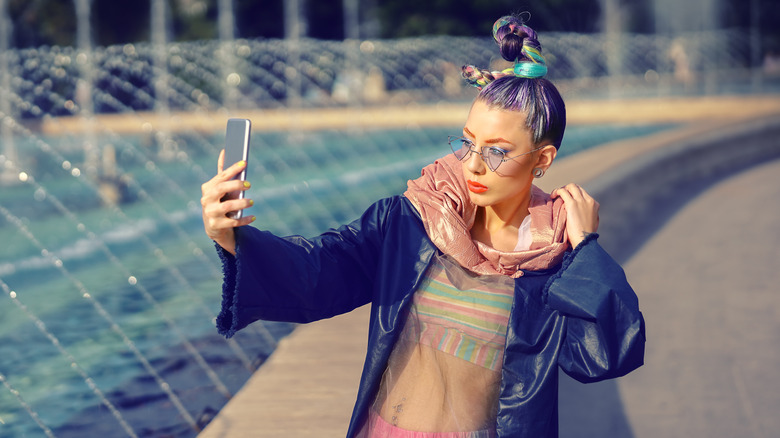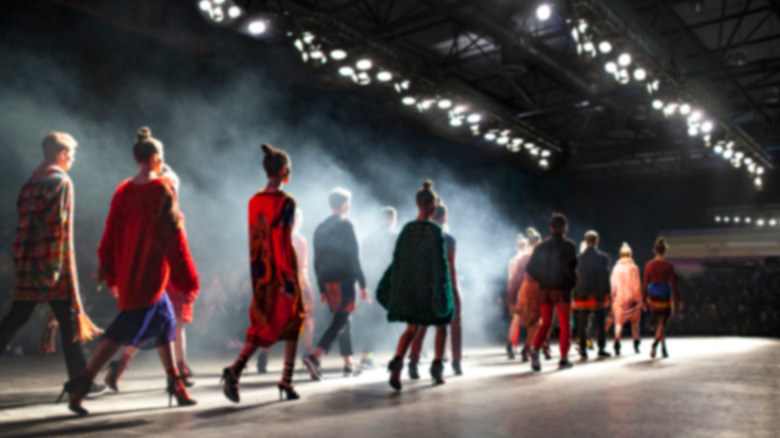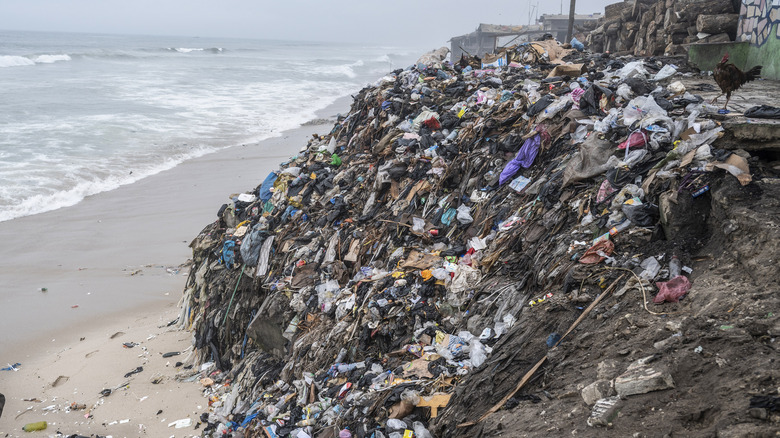The TikTok Fashion Era Is Spoiling Us And Making It Impossible To Keep Up
In a world where TikTok has become the apex for excessive coining of micro fashion trends, the race to keep up is cultivating an unhealthy culture of overconsumption and conformity.
Entertaining and addictive in nature, TikTok has had an indelible impact on the fashion industry. With over 1 billion active users on the platform, not only has it helped democratize who gets to be seen as fashionable amid harrowing and exclusionary beauty standards, it's even changed how consumers shop. Traditionally, trend forecasters, designers, celebrities, fashion editors (arguably the original influencers) dictated and conveyed to the masses what is trending. As the sheer number of both viral and self-appointed influencers with relatable and accessible content about fashion continues to increase, the lines are more blurred than ever with who is the authority on trends.
In an endlessly scrolling sea of aesthetic posturing and unrealistic hauls, what does the TikTok fashion influencer complex mean for personal style and consumption habits?
Democratizing fashion, but not really
Fashion enthusiasts on TikTok moved away from their blogosphere and Instagram predecessors by sharing their unfiltered lifestyles and personalities alongside discussing trends and daily outfits. This divergence from previously popular content formats transformed the possibilities of what fashion content could look like – and more importantly, who could be the face of it. TikTok has allowed for more diversity and inclusion of underrepresented individuals in fashion, and consequently, new echelons of creativity and experimentation have arisen.
The insidious side to social media's "democratization" of fashion, though – which contradicts just how allegedly democratic both social media and the fashion industry claim to be – is that expressing originality or sharing unique styles has quickly derailed into everyone looking alike. Monikers for curated assortments of clothing that reflect moods or fictional characters more than the actual clothes themselves have produced online identity markers that can only be achieved through an accelerated trend cycle enabled by overconsumption.
Seeking a sense of belonging through wardrobe has further mutated in the age of algorithms with parasocial relationships, wherein followers have non-reciprocal connections with media figures. Connecting with others on an app like TikTok is largely happening through sharing similar niche aesthetics (which really just means buying the same things). These identity markers are the digital iterations of subcultures within youth culture at large, whether it's cottagecore espousing sartorial choices straight out of a fairytale book and nostalgia for slow living in nature, or balletcore touting dancer staples like bodysuits and leg warmers to achieve feminine yet minimalistic style through breathable and moveable pieces.
The planet can't keep up with trends
The pervasive lack of personal style across social media reflects the overwhelming nature of groupthink online. The desire to go viral, and the notion that whatever is viral must be desirable, has disproportionately scaled caring about what others think at the expense of not only developing personal taste, but exploitation of labor and environmental resources too. Per The Lowest Wage Challenge, of the 75 million people worldwide employed by the fast fashion industry in particular, only 2% are estimated to make a living wage.
Trends are being created and forgotten at an unprecedented pace, generating a mountainous amount of waste. Per Business Insider, 85% of all textiles discarded in landfills every year. The fashion industry accounts for 10% of humanity's carbon emissions and is the second-largest consumer of water worldwide, simultaneously depleting water sources and filling the ocean with micro-plastics. Furthermore, as clothing production continues to increase to meet consumer demand, garment life usage decreases.
A shift in mindset away from micro-trends and overconsumption may seem like a daunting task, but it's not impossible. TikTok has provided space for discourse on shopping secondhand to cultivate personal style, repurposing to reduce waste, and viewing clothes as investments rather than impulses. Careful consumption of both content and clothing can go a long way in helping establish a more sustainable fashion industry for future generations.


